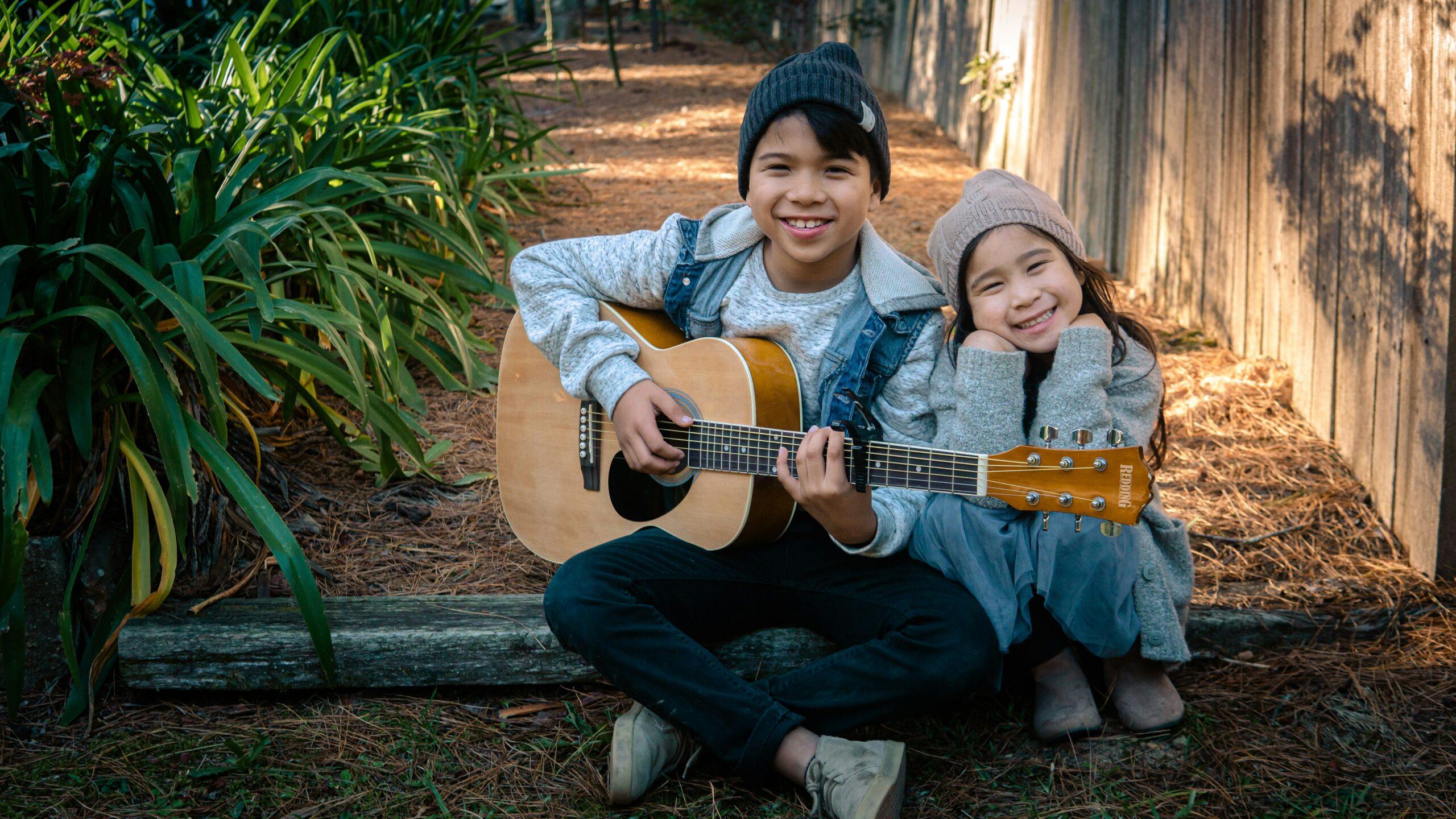The holidays provide a wonderful opportunity to introduce your children to music and the joy it can bring to everyone’s life. Christmas carols and other seasonal songs are meant to be sung by people of all musical abilities and generally have a narrow range of notes, making them easy to play on simple instruments that young kids can learn. Consider listening to music together as you cook, bake holiday cookies, decorate the house and wrap gifts. Babies and toddlers enjoy listening to all kinds of happy holiday tunes as a beginning to their music education. For tots, this can open a stimulating new world.
Kids who play a musical instrument use their brains in ways that boost their abilities to learn in school. Music lessons and practice sessions require children to use problem-solving skills as they break down complex compositions into smaller parts, identify difficult sections in a piece of music and come up with tactics for playing their instruments well.
Music lessons and practice sessions also boost children’s patience, persistence and confidence— character traits that help them in all areas of life. But not all families can invest the time and money required for lessons. For these families, the ocarina is a great first instrument.
The ocarina is a pocket-sized wind instrument that dates back thousands of years in cultures around the globe. Kids can generally pick out simple carols and folk tunes on the ocarina without the formal lessons required for learning to play more complicated instruments. The ocarina also has a soothing sound that is great for young children and parents. Kids tend to find it calming, whether they are playing or listening. Ocarina music can also be upbeat, playing peppy songs like “Jingle Bells,” “Frosty the Snowman” and “Hanukkah, Oh Hanukkah.”
Whatever instrument kids pick up, parents can sit in to listen to practice and jam sessions. Parents can practice and learn along with their children too. This is one of the great aspects of playing an instrument: Whether family members are singing, playing instruments or just listening to music, music affords families the opportunity to connect in a relaxed and entertaining way. This is especially welcome during the busy holiday season. Enjoy slowing down by sharing music, instead of running to the next activity at a frenetic pace.
Some kids will become accomplished musicians, feeling passionate about the act of making music and performing. Others will enjoy a casual musical experience, playing their instrument just for the joy, relaxation and creativity of it. Either way, parents who share their love of music with their children give them a lifelong gift.
Tips for Introducing Children to a Musical Instrument
- See which instrument excites your child. Taking the family to a concert is a great way to expose your child to a number of instruments at once. If your son or daughter shows a preference for a particular instrument, bring your child to a music store or someplace he or she can touch and try the instrument firsthand. If your child is not enthralled with a particular instrument, show off others until you find one that sparks interest.
- Find your child’s favorite style. Don’t be disappointed if classical violin or piano is not beautiful music to your child’s ears. Kids can get the same benefits from learning different styles of music. The idea is not to be narrow or limiting, but to let your child explore.
- Make music part of your home life. Kids who come to me from homes where families don’t sing tend to learn a lot slower than those from more musical families. If mom has been singing to a child since infancy, the child typically has a more developed sense of pitch and timing. Music is like a language. If you are immersed in it and constantly listening to it, you are going to pick up the language much more quickly than by studying it as a separate part of your life.
- Plan the timing right. When a child can begin learning an instrument depends on the instrument and the child. For violin I recommend most students start between the ages of 3 and 5, before they have school and other activities vying for their attention. Depending on methodology, age 4 or 5 is a good time to start learning piano or guitar. Students need to be a bit older for most wind instruments— about age 7 for flute and 9 for clarinet. The exception is the ocarina, which can be started as young as age 3. Babies can jump on the musical bandwangon from the get-go by listening and singing to songs.
- Stay involved with your child. It’s important for parents to remain interested and involved in their child’s music practice. Younger children especially won’t know how to practice without some parental guidance as kids often want to play through a song. If they get stuck at a certain spot, their inclination is to go back to the beginning. Parents can help by encouraging kids to work on the difficult parts separately, and then put the parts together to create the song as a whole. Enjoy the whole process!




